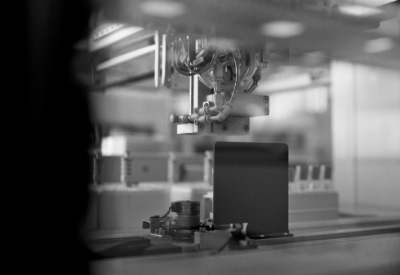July 2024 | News
What Is Radiation? Understanding City Labs’ NanoTritium™ Batteries
Understanding what radiation is—along with its safety concerns and potential applications—is crucial to understanding the modern nuclear energy landscape. City Labs’ NanoTritium™ batteries rely on radiation in the form of beta particles to provide power for microelectronic applications.
These batteries utilize tritium, a radioactive isotope of hydrogen, to provide long-lasting power in low-energy applications. This article explores the nature of radiation (specifically the type used in tritium batteries) and explains why these energy sources are safe for everyday use.
Radiation Explained
Radiation refers to the energy emitted from atoms in the form of particles or electromagnetic waves. It is a natural phenomenon that exists all around us, from both natural sources like the sun and manmade sources. Radiation is classified into two broad categories—ionizing and non-ionizing—and is found in many modern technologies, from medical treatments to energy generation.
The key difference between ionizing and non-ionizing radiation is found in the energy of the radiated particles. Ionizing radiation carries enough energy to remove tightly bound electrons from atoms, creating ions. This ionization process can lead to chemical reactions that may damage or alter materials, including biological tissues.
For instance, ionization can break DNA strands in human cells, potentially leading to mutations and cancer if the damage is not adequately repaired. This is why ionizing radiation requires extreme caution, using shielding and strict safety protocols, especially in medical and industrial applications.
Conversely, with its lower energy, non-ionizing radiation is generally considered safer because it does not cause ionization and the associated cellular damage.
Tritium and Betavoltaic Technology
City Labs specializes in nuclear battery technology, specifically betavoltaic technology, which harnesses the power of beta radiation emitted by tritium to generate electricity. Tritium, or hydrogen-3, is a weak beta emitter, meaning it releases low-energy beta particles that are incapable of penetrating human skin or even a few millimeters of air.
Tritium’s half-life of approximately 12.3 years allows for a predictable and steady production of energy, making it ideal for a range of applications requiring longevity and reliability, such as in aerospace, military, and medical devices.
Safety of Tritium

Despite being a radioactive substance, tritium is considered safe for use in consumer and industrial applications due to its weak radiation and the effective safety and containment measures employed by manufacturers like City Labs.
The beta particles emitted by tritium have such low energy that they cannot penetrate the outer dead layer of human skin, thus posing no health risk when properly contained within a device. This allows tritium to be safely used for many medical applications—including implantable medical devices like leadless cardiac pacemakers—minimizing radiation exposure. Moreover, the comparatively short half-life of tritium means that the radioactivity diminishes relatively quickly, reducing long-term risks.
Regulatory Compliance and Safety Measures
City Labs adheres to strict nuclear safety measures regulated by bodies such as the Nuclear Regulatory Commission and the Florida Department of Health. These standards ensure that all safety aspects—from production, handling, use, and disposal—are rigorously managed to prevent any risk of radiation exposure to users and the environment.
Additionally, the design of NanoTritium™ batteries and their packaging incorporates robust containment strategies that prevent tritium escape, further ensuring these devices’ safety.
Environmental Impact
City Labs is committed to minimizing the environmental impact of its products. Tritium’s safety profile and relatively short half-life contribute to the environmentally friendly profile of NanoTritium™ batteries. Proper disposal measures are followed to ensure that all used and end-of-life batteries are managed in a way that adheres to environmental safety standards.
Conclusion
When understood and harnessed correctly, radiation offers numerous benefits. The NanoTritium™ batteries produced by City Labs exemplify how innovative technologies can utilize radiation safely and effectively to provide numerous benefits across industries.
By adhering to strict safety standards when designing novel use cases that employ tritium’s low-energy power capabilities, City Labs ensures that these batteries are reliable and safe for both end users and the environment, opening doors to new possibilities in power generation.
City Labs has teamed up with experts across the globe to develop new use cases for low-power microelectronic devices. We are always open to collaborations and encourage anyone interested in exploring new partnerships to contact us today.










